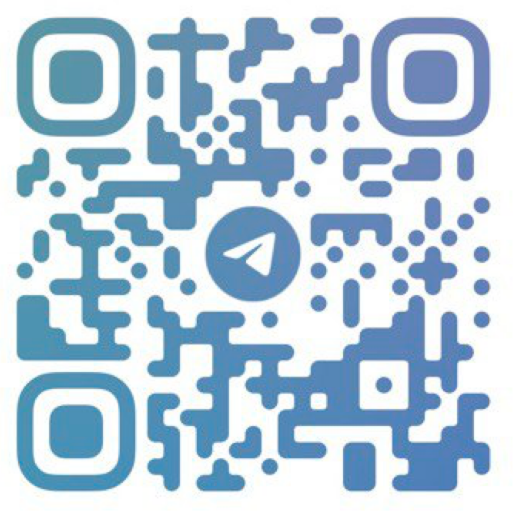










MDEX Translation site
MDEX.COM is a decentralized cross-chain trading aggregating bridge supporting BSC, HECO, and ETH. Discover the Ultimate Collection of Blockchain Tools at Coinnav.io!
Tags:aggregating bridges blockchain tools cross-chain bridges cryptocurrency defi DEX AggregatorsMDEX Bridge | CoinNav- Blockchain Trading Starts Here

In recent years, the rapid growth of decentralized finance (DeFi) has caused a major disruption in the finance industry. This is evident from the significant increase in Total Value Locked (TVL) within DeFi protocols. In fact, the TVL reached a record high of $100 billion at the beginning of 2021. Consequently, numerous decentralized exchanges have emerged, each with its unique value propositions.
One notable decentralized exchange is Mdex. It is dedicated to establishing a comprehensive DeFi platform that encompasses liquidity services, staking, swapping, mining, and more. Mdex aims to provide highly efficient and cost-effective services to its users. Now, let's delve into what Mdex is all about and the features it brings to the table!
Your Go-To Source for the Latest News and Tools in the Blockchain Sector - Coinnav.io
What Is Mdex (MDX)?
Mdex, short for Mandala Exchange, is a decentralized exchange platform that aims to integrate the beneficial features of various blockchain networks, creating a high-performance decentralized DeFi ecosystem. This ecosystem combines a decentralized exchange (DX), an Initial Model Offering (IMO), and a Decentralized Autonomous Organization (DAO).
Mdex is currently deployed on the Binance Smart Chain (BSC) and the Huobi Eco Chain (HECO). However, users can utilize the MDEX Bridge to facilitate cross-chain transactions across BSC, HECO, and Ethereum. Additionally, Mdex offers a comprehensive solution for liquidity services, leveraging a unique automated market maker mechanism to maintain liquidity.
These liquidity services are specifically designed for high-quality assets, ensuring users can engage in secure, reliable, diversified, and cost-effective transactions. Notably, the platform has achieved a high ranking in DEX rankings on platforms like CoinMarketCap and CoinGecko in terms of total value locked. Mdex aims to expand its applications and reduce barriers to financial services.
The platform strives to enable fair asset pricing without arbitrage opportunities and facilitate instant settlement of transactions within 3 seconds, ensuring seamless value transfer. Moreover, Mdex has future plans to support Ethereum layer 2 networks, OKExChain, DOT, NEAR, and other blockchain networks, aiming to establish a fast, highly efficient, and cost-effective decentralized exchange platform for cross-chain transactions.
The MDEX Journey
Mdex made its debut on the Huobi Eco Chain (HECO) on January 9th, 2021. Huobi, a Bitcoin exchange company founded in 2013, introduced the Huobi Eco Chain as a blockchain solution built on the Ethereum Virtual Machine. This blockchain is designed to be efficient and cost-effective, catering to the needs of developers.
On January 19th, Mdex introduced its innovative dual mining mechanism. This mechanism not only offered mining rewards but also transaction rewards, attracting a significant number of users and generating liquidity. The presence of ample liquidity ensured smooth and reliable transaction processing, contributing to the growing credibility of Mdex.
Mdex Developmental History
Boardroom Launch: On February 3, 2021, Mdex introduced the Boardroom, granting special rights to MDX token holders. Through the Boardroom, MDX holders can participate in governance and receive long-term profits. The Boardroom also ensures transparency by providing open access to data, fostering a truly decentralized governance structure. Additionally, the Boardroom keeps a record of the repurchase and burn mechanism, including repurchased tokens, prices, and total burnt MDX tokens.
Repurchase and Burn Program: Implemented on February 6, 2021, the repurchase and burn program involved a transaction fee of 0.3% of the transaction volume. Of this fee, 0.1% was allocated to ecological developmental projects, 0.14% as rewards for users who pledged MDX to the Boardroom, and 0.06% for MDX repurchase and burn. Mdex sets aside a proportion of its daily platform income for repurchasing MDX tokens, which are automatically burned when the repurchase price is reached, ensuring a deflationary mechanism.
Integration with Binance Smart Chain (BSC): In April 2021, Mdex integrated with BSC, expanding its services and enabling cross-chain functionalities between HECO and BSC. Within a month of its launch on BSC, Mdex reached the third position in terms of Total Value Locked in the BSC ecosystem.
Initial Mdex Offering (IMO) Support: IMO, an initial decentralized exchange mechanism, gained popularity among developers as it provided liquidity and fair participation for launching projects. Mdex officially launched IMO on May 15, 2021, with Demeter being the first project launched under this mechanism. Demeter witnessed significant participation, attracting 6,500 participants and raising a total of $350 million.
Repurchase Plan: On May 25, 2021, following the launch of IMO, Mdex introduced the "burning black hole" repurchase plan. Users could submit their MDX tokens for burning in exchange for rewards, fostering increased user participation and reducing the circulation of MDX tokens, thereby enhancing price stability.
Halving: After just 138 days of operation, Mdex implemented its first reward halving on June 5. The daily supply was reduced from 4.6 million to 2.3 million tokens, with the new production cut cycle shortened to 90 days. This accelerated the deflationary process and is expected to result in a total supply of MDX below 458 million by February 9, 2026, after the 20th production cut. This, combined with the repurchase and burn model, aims to establish long-term price stability for MDX.
Mdex’s Ecosystem Incentives
Mdex implements a dual mining mechanism that offers rewards for both liquidity mining and transaction mining. This system allows users to earn rewards with every transaction they make while providing liquidity to the platform. Additionally, Mdex introduces a boardroom staking incentive. Let's explore these three incentives in detail:
- Boardroom staking incentive: Users have the opportunity to stake their Mdex tokens in the Boardroom and receive MDX token rewards in return. The staking process is flexible, allowing users to stake as little as one MDX token. Furthermore, Mdex supports staking tokens from other platforms, such as HT and BNB, with plans to expand the list of supported tokens.
- Transaction mining incentive: Similar to traditional mining, transaction mining rewards users for each transaction they perform. This incentive aims to offset users' transaction costs. While centralized exchanges typically charge around 0.2% per transaction, Mdex offers significantly lower transaction fees, as low as $0.1, which can be further reduced through transaction mining rewards.
- Liquidity mining incentive: The liquidity providers play a crucial role in determining the transaction size within the Automated Market Maker (AMM) mechanism. To incentivize liquidity provision, Mdex offers generous rewards to liquidity providers. As of June 2021, Mdex has allocated $455 million for transaction fee subsidies, making it one of the most cost-effective decentralized exchanges available.
Mdex Ecosystem Fund
The development and expansion of the blockchain and DeFi ecosystems are the key goals of the Mdex Ecology Fund. With a focus on managing resources, this fund plays a crucial role in shaping the future of the Mdex platform and the broader blockchain industry.
The primary objective of the fund is to foster the continuous progress of decentralized applications (dApps). It achieves this by offering essential blockchain infrastructure and ecosystem components for DeFi projects. Furthermore, the fund provides comprehensive support, including technical assistance, market operation resources, and security audits, to ensure the success and security of the supported projects.
The MDX Token: An Overview
The MDX token serves as the native currency within the Mdex ecosystem. With a total supply capped at 1 billion tokens, the distribution of MDX tokens is as follows: 10% is allocated for team rewards related to operations and technical research and development, 7% is reserved for early investors, and 3% is dedicated to marketing efforts.
The MDX token holds multiple utility functions within the Mdex platform. It serves as a reward for transaction and liquidity mining activities, incentivizing users to actively participate in the ecosystem. Additionally, MDX token holders can stake their tokens in the boardroom and receive rewards. The MDX token is also used for conducting transactions within the network. Furthermore, owning MDX tokens grants individuals governance rights, allowing them to participate in decision-making processes within the Mdex ecosystem.
MDX Price Outlook
As of the time of writing, the MDX token is trading at $0.08273. Industry experts and price prediction models suggest various scenarios for the future price of MDX. According to crypto news, MDX is expected to range between $0.34 and $0.40 in the next 6 months, with the possibility of surpassing this range due to planned platform improvements.
PricePrediction.net forecasts that MDX could reach approximately $0.16 by 2023 and potentially reach $1.97 by 2030. Digital coin forecasts a projected average of $0.11 in 2022, $0.19 in 2027, and a potential increase to $0.34 in 2029.
Trading Beast predicts that MDX could reach $0.18 within a year and rise to $0.35 by 2030. The Price Prediction model suggests MDX may be around $0.34 in 2025, showing growth from $0.11 in 2022, and could potentially reach $0.97 by 2028 and $1.97 by 2030. It is important to note that these are speculative predictions and should not be considered definitive indicators.
As with any investment, it is crucial to conduct thorough research and exercise caution when making financial decisions. Market conditions and various factors can influence the actual price of MDX, and individual results may vary.
Closing Thoughts
Mandala Exchange is a decentralized platform built for swapping, lending, and trading on HECO and BSC. With its multichain infrastructure, it aims to create a robust DeFi ecosystem by integrating DAO, IMO, and DEX functionalities. The platform is set to expand its services to include options contracts, financing, futures contracts, insurance, and more.
One of the standout features of Mandala Exchange is its low transaction fees, which are offset by mining and transaction rewards. Additionally, the platform employs an active burning mechanism to create deflationary pressure on the token. Despite supporting high-risk assets, the platform maintains high liquidity.
The native token of the platform, MDX, serves as a means of transaction payment and a reward mechanism. It also grants users governance rights within the ecosystem. If you're interested in buying MDX, you can do so through Zebpay.
As you explore the world of Mandala Exchange and the MDX token, always remember to conduct thorough research and exercise caution when making investment decisions.








